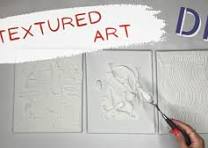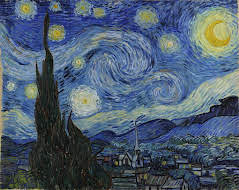The Evolution of Modern Art Museums
Modern art museums play a pivotal role in shaping the cultural landscape of today’s society. These institutions serve as hubs of creativity, innovation, and expression, showcasing a diverse range of artistic styles and movements that challenge traditional norms and push boundaries.
One of the defining characteristics of modern art museums is their commitment to fostering dialogue and critical thinking about contemporary issues through the lens of art. By curating exhibitions that reflect the complexities of our world, these museums provide a platform for artists to engage with social, political, and cultural themes in thought-provoking ways.
Moreover, modern art museums have evolved to embrace a more inclusive and diverse approach to art curation. They actively seek out works by artists from marginalized communities, highlighting voices that have historically been underrepresented in mainstream art discourse. This commitment to diversity not only enriches the museum experience but also promotes greater understanding and empathy among visitors.
Technology has also played a significant role in transforming modern art museums. Many institutions now leverage digital platforms and interactive exhibits to engage audiences in new and immersive ways. Virtual tours, augmented reality experiences, and online collections have made art more accessible than ever before, breaking down barriers to participation and reaching global audiences.
As we look to the future, modern art museums will continue to evolve and adapt to the changing needs of society. By embracing innovation, diversity, and inclusivity, these institutions will remain vital spaces for creativity, reflection, and inspiration for generations to come.
Exploring Diversity and Dialogue: The Impact of Modern Art Museums
- Showcases diverse artistic styles and movements
- Promotes critical thinking and dialogue on contemporary issues
- Highlights voices of artists from marginalized communities
- Utilizes technology for interactive and immersive experiences
- Fosters inclusivity and diversity in art curation
Challenges and Concerns: Navigating Modern Art Museums
- Some visitors may find modern art challenging to understand or appreciate.
- Modern art museums can be overwhelming due to the sheer volume of artworks on display.
- Limited accessibility for individuals with disabilities in some modern art museums.
- High entrance fees and ticket prices may deter budget-conscious visitors.
- Controversial or provocative artworks in modern art museums can be off-putting for certain audiences.
- Crowded exhibition spaces can diminish the overall museum experience for some visitors.
- Limited representation of traditional or classical art styles in favor of contemporary works may alienate certain art enthusiasts.
Showcases diverse artistic styles and movements
Modern art museums excel in showcasing diverse artistic styles and movements, offering visitors a rich tapestry of creativity and innovation. By featuring a wide range of artistic expressions, from abstract to surrealism, and from minimalism to pop art, these museums provide a platform for artists to explore their unique visions and challenge conventional artistic boundaries. This diversity not only celebrates the multiplicity of human creativity but also encourages dialogue and appreciation for different cultural perspectives, making modern art museums vibrant hubs of artistic exploration and discovery.
Promotes critical thinking and dialogue on contemporary issues
Modern art museums serve as dynamic platforms that promote critical thinking and foster meaningful dialogue on contemporary issues. By curating exhibitions that reflect the complexities of our world, these institutions encourage visitors to engage with art as a lens through which to explore and understand pressing social, political, and cultural topics. Through thought-provoking artworks and innovative presentations, modern art museums spark conversations that challenge conventional perspectives, inspire reflection, and encourage a deeper understanding of the multifaceted issues facing society today.
Highlights voices of artists from marginalized communities
Modern art museums serve as powerful platforms that highlight the voices of artists from marginalized communities, offering them a space to share their unique perspectives and experiences with a wider audience. By showcasing artwork created by diverse artists, these museums not only celebrate cultural richness and creativity but also challenge societal norms and promote inclusivity in the art world. This proactive approach not only provides representation for underrepresented groups but also fosters a more inclusive and equitable art community where every voice is valued and heard.
Utilizes technology for interactive and immersive experiences
Modern art museums excel in providing interactive and immersive experiences by leveraging cutting-edge technology. Through the integration of digital platforms, virtual reality, and interactive exhibits, these institutions offer visitors a dynamic and engaging way to explore art. By embracing technology, modern art museums create opportunities for audiences to interact with artworks in innovative ways, fostering deeper connections and enhancing the overall museum experience. This pro not only enhances accessibility but also enriches the understanding and appreciation of art in a contemporary context.
Fosters inclusivity and diversity in art curation
Modern art museums, through their commitment to fostering inclusivity and diversity in art curation, play a crucial role in amplifying the voices of artists from diverse backgrounds and marginalized communities. By actively seeking out and showcasing a wide range of artistic perspectives, these museums create a more inclusive cultural space that reflects the richness and complexity of our society. This proactively promotes greater representation and appreciation for artists who have historically been underrepresented in traditional art institutions, fostering a more equitable and diverse art landscape for both creators and audiences alike.
Some visitors may find modern art challenging to understand or appreciate.
Some visitors may find modern art challenging to understand or appreciate due to its abstract and unconventional nature. The lack of familiar subject matter or traditional techniques in modern artworks can be disorienting for those accustomed to more traditional forms of art. This disconnect may lead to feelings of confusion or frustration among certain museum-goers, hindering their ability to fully engage with and appreciate the artistic intent behind the pieces. However, this con also presents an opportunity for viewers to expand their perspectives, question preconceived notions, and delve deeper into the complexities of contemporary art, ultimately fostering a more enriched and nuanced understanding of artistic expression.
Modern art museums can be overwhelming due to the sheer volume of artworks on display.
Modern art museums can be overwhelming due to the sheer volume of artworks on display. The vast array of pieces spanning different styles, genres, and time periods can sometimes create a sensory overload for visitors. Navigating through numerous galleries filled with diverse artworks may lead to a sense of fatigue or difficulty in fully appreciating each individual piece. The abundance of artistic expressions can make it challenging for visitors to focus their attention and engage deeply with the works on exhibit. As a result, some may feel overwhelmed by the sheer quantity of art presented, potentially detracting from the overall museum experience.
Limited accessibility for individuals with disabilities in some modern art museums.
Limited accessibility for individuals with disabilities in some modern art museums poses a significant con that hinders inclusivity and diversity within these cultural institutions. The lack of proper accommodations such as wheelchair ramps, Braille signage, audio descriptions, and sensory-friendly exhibits can prevent individuals with disabilities from fully engaging with the artworks and experiencing the museum’s offerings. This limitation not only excludes a segment of the population from enjoying art but also perpetuates barriers to cultural participation and representation. Addressing this issue is crucial to ensuring that modern art museums truly serve as spaces that are welcoming and accessible to all visitors, regardless of their physical or cognitive abilities.
High entrance fees and ticket prices may deter budget-conscious visitors.
High entrance fees and ticket prices at modern art museums can pose a significant barrier for budget-conscious visitors, limiting their access to the rich cultural experiences and artistic offerings that these institutions provide. The cost of admission may deter individuals and families who are unable to afford expensive tickets, thereby excluding a portion of the population from engaging with the diverse range of artworks and exhibitions on display. This financial obstacle highlights the need for modern art museums to explore alternative pricing models or offer discounted rates to ensure that art remains accessible to a wider audience, regardless of economic background.
Controversial or provocative artworks in modern art museums can be off-putting for certain audiences.
Controversial or provocative artworks in modern art museums can be off-putting for certain audiences. While art has the power to provoke thought and spark important conversations, some viewers may find certain pieces challenging or uncomfortable to engage with. The subjective nature of art means that what one person finds inspiring, another may find unsettling. As a result, the presence of controversial artworks in modern art museums can create a divide among visitors, with some feeling alienated or disconnected from the artistic experience. It is essential for museums to strike a balance between pushing boundaries and respecting diverse perspectives to ensure that all audiences feel welcome and included in the exploration of art.
Crowded exhibition spaces can diminish the overall museum experience for some visitors.
The con of crowded exhibition spaces in modern art museums can detract from the overall museum experience for some visitors. The presence of large crowds can lead to feelings of discomfort, distraction, and a lack of personal space, making it challenging for individuals to fully engage with and appreciate the artwork on display. Moreover, overcrowded galleries may hinder the ability to move freely and explore exhibits at one’s own pace, resulting in a rushed and less immersive visit. For those seeking a more contemplative and intimate art-viewing experience, the bustling atmosphere of crowded exhibition spaces can diminish the opportunity for meaningful connection with the art and limit the enjoyment of the museum visit.
Limited representation of traditional or classical art styles in favor of contemporary works may alienate certain art enthusiasts.
In modern art museums, the limited representation of traditional or classical art styles in favor of contemporary works may alienate certain art enthusiasts who have a deep appreciation for the historical and cultural significance of traditional art forms. By focusing primarily on contemporary art, these museums risk excluding a segment of the audience that values the beauty and timelessness of classical artworks. This imbalance in curation could create a sense of disconnect for those who seek to engage with a broader spectrum of artistic expressions, highlighting the importance of maintaining a balance between showcasing contemporary innovation and honoring the rich heritage of traditional art styles to cater to diverse artistic preferences.




